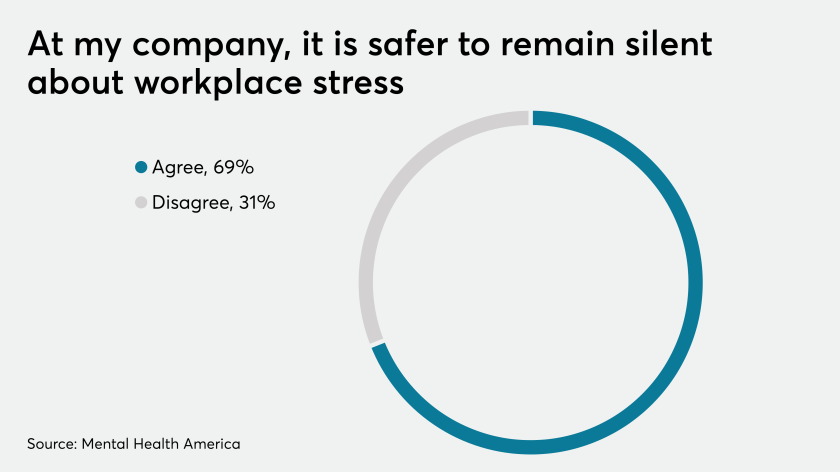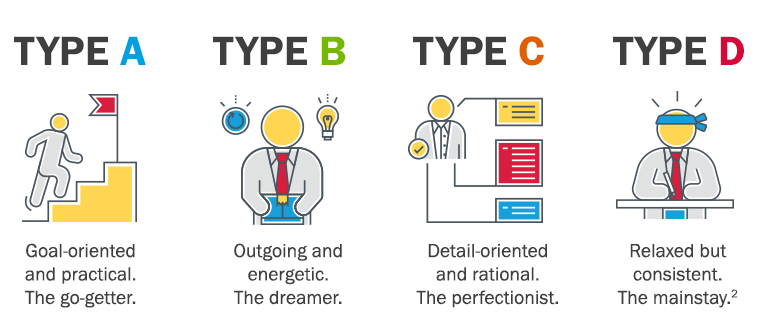Not all stress is bad stress. In fact, the definition of stress—a non-specific response of the body to any demand for change—is neither positive nor negative. But the negative stress your employees feel can, over time, have an impact on their health and productivity. The result: disengaged employees.
Negative stress can lead to irritability, headaches, colds, body aches and difficulty sleeping. Stress can also exacerbate chronic health problems, like heart disease or asthma. Eventually, stressed employees can become disengaged and burn out. Employee disengagement is a growing problem for employers. Workers who are actively disengaged cost employers $483 to $605 billion in lost productivity.1
When employees are engaged, they’re enthusiastic about work; they’re more productive, they leave jobs less often, they drive profitability and higher customer satisfaction.
Disengaged employees may be less likely to show up for work, and less productive when they do. They may also become increasingly angry at work, or not speak up when there’s an issue. They may avoid their coworkers and events at work, and they might try to avoid taking on new responsibilities.

Understanding How Stress Works
In an ideal situation, periods of stress are followed by time to recover. Similar to a high-intensity interval workout, the body has time to bounce back, maintain high performance and good health. This pattern is manageable for most employees, but as stress builds and those recovery periods diminish or disappear completely, it becomes increasingly difficult for employees to recover. When work stress is compounded by life events such as financial strain, relationship issues, childcare, moving or student loans, the stress can become too much to handle.
That’s why it’s so important to recognize stress in employees and provide tools to reduce it and prevent it from happening.
Stress Leads to Disengagement and Burnout
Managing stress in the workplace is complicated. Different employees process stress in different ways based on personality, role and outside forces like stress away from work. There are generally four personalities:

While Type A and Type C employees may thrive in a stressful environment, Type B and Type D thrive in low-stress jobs. It’s up to employers, managers and mentors to help identify that employees are in the right seat on the right bus within an organization.
Burnout that results from stress manifests itself in different forms. Frenetic employees burdened by too much work can become overloaded and exhausted. Employees who aren’t challenged enough may distance themselves from work and become cynical. Some employees may even shut down and give up in the face of too much stress.
How to Manage Workplace Stress
Employee benefits can play a role in helping employees manage stress and helping companies thrive. But there is a range of benefits; it’s important to zero in on those that target the root cause of stress, rather than ones that act as a band-aid.
Bonuses and raises are easy to hand out, but may not re-engage disengaged employees
One place to start is your health & wellness program. By fostering a culture of wellness—one that starts with the C-suite and filters through the organization—employees may put more emphasis on getting and staying well. That means focusing on more than just biometric and health screenings and ensuring that wellness encompasses financial health, mental wellbeing, stress management, sleep and social wellbeing.
Beyond a health & wellness program, employers can reengage their workforce through:
- Emotional health support
- Maternity and paternity leave
- Childcare assistance
- Student loan repayment assistance
- Workplace recognition programs
- Staff development and training
- Increasing headcount
Helping employees manage stress and avoid dangerous burnout and disengagement is a newer concept that does cost employers more money. But the cost of a healthy workforce yields both measurable and immeasurable results, like the ability to attract and retain employees, increases in productivity, gains in profitability and forward momentum.
Organizations can choose to support their employees, or leave them susceptible to stress and burnout… which means the employer will eventually pay the price.
1Gallup, “How to Help Your Managers Build Out, Not Burn Out”
2Hire Success, “Understanding the 4 Personality Types: A, B, C, and D”





